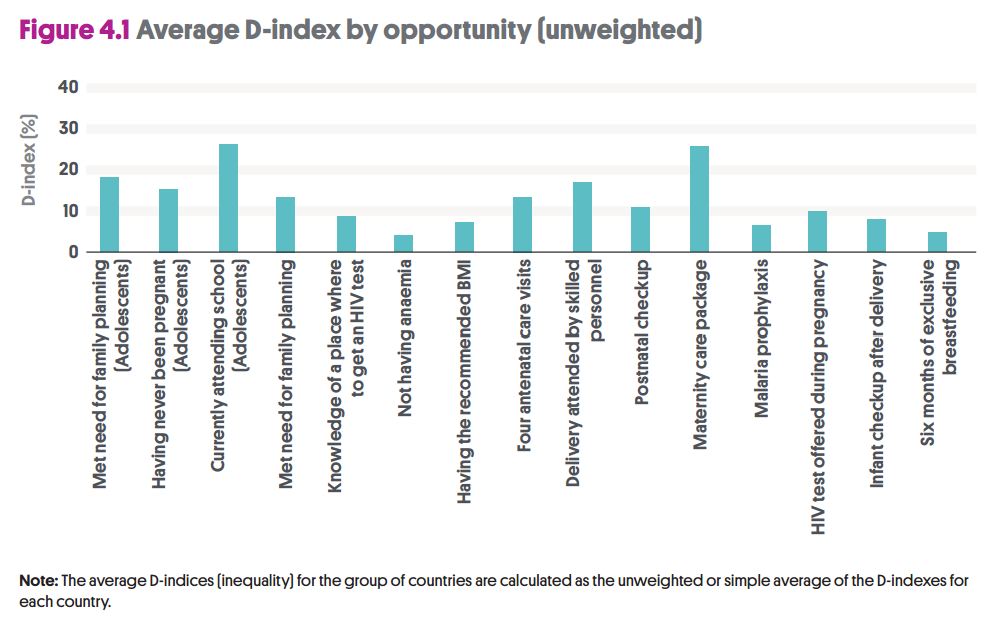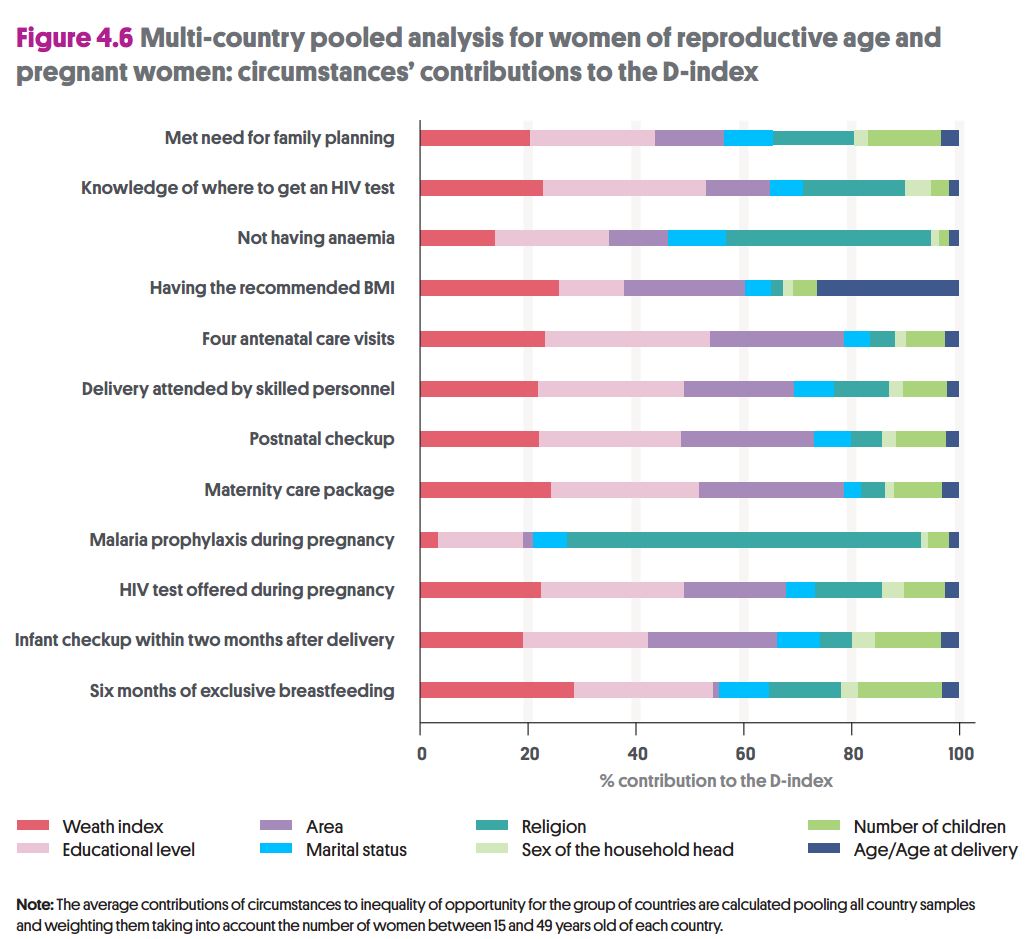The Barcelona Institute for Global Health (ISGlobal), in partnership with the World Bank Group, recently released a report titled, “Inequalities in women’s and girls’ health opportunities and outcomes: A report from sub-Saharan Africa.” The report analyzes the extent to which the following 14 health-related opportunities are equitably available to women of reproductive age in 29 sub-Saharan African countries:
- Met need for family planning
- Currently attending school
- Having never been pregnant
- Having the recommended body mass index (BMI)
- Four antenatal care visits by skilled personnel
- Delivery attended by skilled personnel
- Postnatal checkup for woman
- Maternity care package (at least four antenatal care visits, delivery with skilled personnel and postnatal checkup)
- Not having anemia
- Malaria prophylaxis during pregnancy
- HIV test offered during pregnancy
- Knowledge of a place where to get an HIV test
- Infant checkup within two months following delivery
- Six months of exclusive breastfeeding
For each of the opportunities in all of the 29 countries, a composite metric called the Human Opportunity Index (HOI) was calculated. The HOI takes into account coverage rates and levels of inequality, operationalized as a dissimilarity index (d-index): A higher d-index indicates greater inequality.
Coverage of services
Coverage varied dramatically among the 29 countries. For example, the percentage of women attending at least four antenatal care visits ranged from roughly 15% in Burkina Faso to approximately 85% in Sierra Leone. Similarly, the percentage of women who delivered with skilled personnel ranged from less than 15% in Ethiopia to greater than 90% in the Democratic Republic of the Congo.
Levels of inequality
 In general, the greatest levels of inequality were observed for the following opportunities: currently attending school, maternity care package, met need for family planning and delivery with skilled personnel. In other words, some women and girls in sub-Saharan Africa are more likely than others to have access to these health opportunities. Inequality stems from a number of factors, often depending on the particular political, economic and sociocultural context.
In general, the greatest levels of inequality were observed for the following opportunities: currently attending school, maternity care package, met need for family planning and delivery with skilled personnel. In other words, some women and girls in sub-Saharan Africa are more likely than others to have access to these health opportunities. Inequality stems from a number of factors, often depending on the particular political, economic and sociocultural context.
Influential factors
Of the factors examined by the authors, wealth, education level and area of residence were most likely to influence a girl’s or woman’s access to these health opportunities. The findings are consistent with previous research on the social determinants of maternal health care access.
Interestingly, there was a strong association between religion and both malaria prophylaxis during pregnancy and not having anemia. Additionally, age/age at delivery was more strongly correlated with having the recommended BMI than the other health opportunities. While the exact mechanisms behind these relationships are unknown, further research may shed light on the relative importance of these factors.
Expanding access to key sexual, reproductive and maternal health services and reducing inequalities both within and among countries is critical to achieving the Sustainable Development Goals by 2030.
—
Read the full report for more detailed information.
Learn more about coverage of key maternal health services around the globe.
Explore the MHTF-PLOS Collection, “Neglected Populations: Decreasing Inequalities & Improving Measurement in Maternal Health.”

